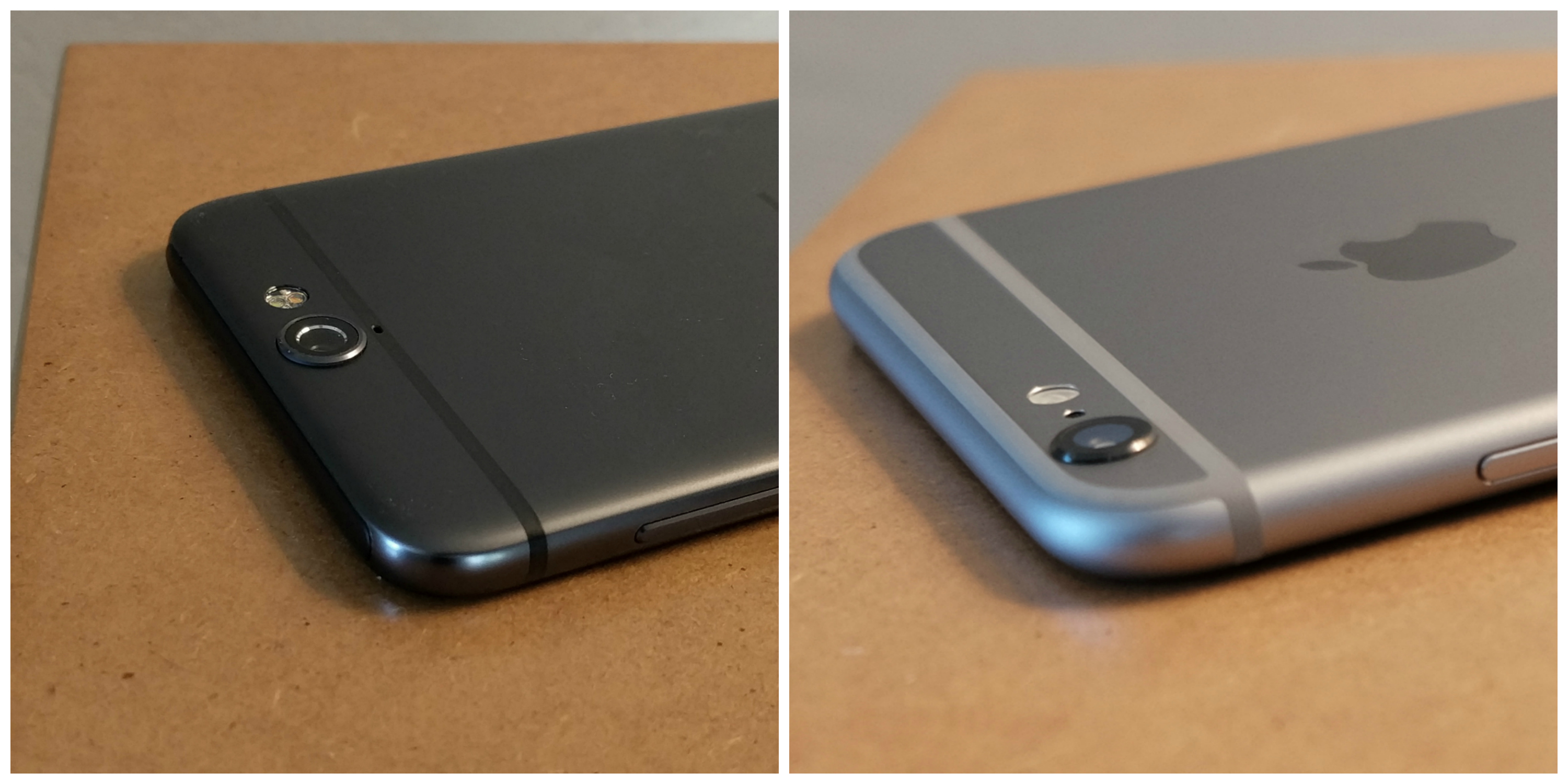Without even turning on the HTC One A9 (which I haven’t yet), the physical similarities with iPhone 6/6s are unmistakable. The smartphones share striking design ethic, separated by the shape of the home-button fingerprint sensor, placement of the rear-facing camera, and left-side SIM and microSD card slots. But these differences aren’t immediately obvious.
My question: Is this the Android for people wanting the iPhone 6s look but something more flexible than the iOS platform? If there is truth in marketing, HTC’s tag lines reveal much: “Design worth imitating”, which while referring the company’s One legacy also could be interpreted as backhanded praise or even fist-to-snub about Apple’s device, which some could argue imitates earlier One models. “Power to choose”—customization and personalization options not offered on fruit-logo handsets.
HTC takes bold strides, which may or may not succeed. I watch with interest. The A9 ships with Android 6 Marshmallow. One of the big benefits: The OS can treat microSD cards as extended, integrated storage. While the handset ships with only 32GB storage, it is truly, seamlessly extendable to 2TB. You read rightly: terabytes.
Price is another benefit: $399 for a limited time before going up to $499. iPhone 6s with twice the storage capacity sells for $749—both phones unlocked and contract-free. Two-year old iPhone 5s sells for $50 more than the A9 at the promotional price. Android buyers get similar design ethic, with expandable storage, Marshmallow, and other benefits for considerably less cash out of their pockets.
Again, it’s gutsy but also risky. HTC struggles right now. During calendar third quarter 2015 the company lost $139 million on revenue of $660 million. Gross margin: 18 percent. By comparison, Apple revenue reached $51.5 billion with net profit of $8.5 billion. iPhone generated 62.5 percent of total sales. Gross margin: 39.9 percent.
There is great risk selling a high-end phone for so little, direct, and without massive supporting retail channel. The strategy means tighter margins that only pays off if HTC gobbles up market share.
How high end? Specs: 5-inch 1080p LCD display; 1.2Ghz Qualcomm Snapdragon 617 Octa-core processor; 3GB RAM; 32GB storage, expandable to 2TB via microSD card; 13-megapixel f/2 rear camera and UltraPixel on the front.
By comparison, the similar looking iPhone 6s: 4.7-inch LCD display (1334 x 750 resolution); Apple A9 chip; 16, 64, or 128GB storage (depending on model) and non-expandable; 12MP f/2.2 front and 5MP f/2.2 front cameras.
The A9 measures 145.75 x 70.8. x 7.26 mm, and the 6s is 138.3 x 67.1 x 7.1 mm. Both weigh 143 grams. Say, is it coincidence, that HTC chose A9, which is same name as Apple’s processor, for such a physically imitative smartphone? Depending on who copies whom.
By first impression, and again without yet powering up, the new HTC One feels much better in the hand that iPhone 6s. Physical balance is fantastic. While both enclosures are made of aluminum and use rounded rather than flat bevel, they don’t share the same design problem. I find either the 6 or 6s to be too slippery, which is what I expected from the A9. But in carelessly fumbling the HTC around, that’s not the case. I get better grip on the One than the iPhone.
I will start seriously using HTC One A9 over the weekend ahead of writing my full review. But that’s my out-of-the-box fast, first impression.
